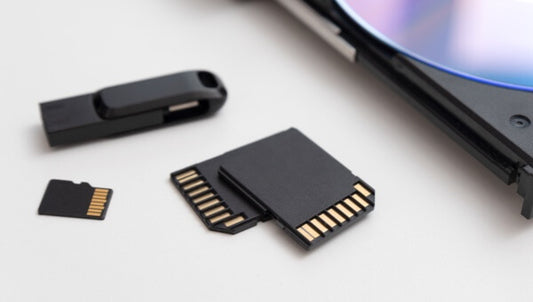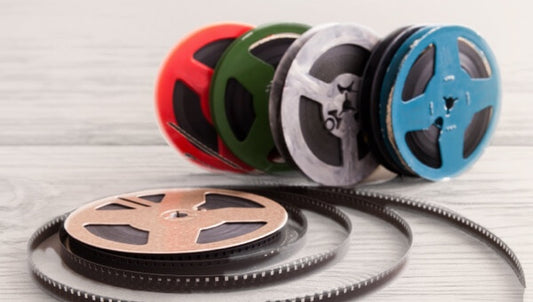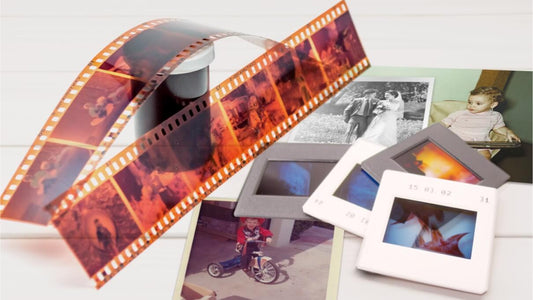Photography has evolved dramatically over the past century, tracing the evolution of the camera from mechanical film models to digital precision tools. The debate between analog and digital cameras continues to intrigue enthusiasts and professionals alike. Analog cameras rely on light-sensitive film to capture images, while digital cameras convert light into pixels for instant results. Each approach offers unique benefits, and understanding their differences can help photographers choose the right medium.
Jump to:
The Art of Film Photography
Analog cameras create images using light, chemistry, and film. When you press the shutter, light hits the film camera’s emulsion, forming a latent image. The anticipation of waiting for prints adds an emotional dimension to photography, making each shot feel deliberate.
Film introduces an organic texture and depth that digital often struggles to replicate. Grain patterns vary depending on film type, ISO, and development techniques, producing a unique signature for every photo. This unpredictability gives analog images a warmth and authenticity treasured by artists and collectors.

Film cameras capture light on physical film rolls, preserving photography’s classic charm and texture.
The Rise of Digital Cameras
Digital cameras revolutionized photography by replacing film rolls with memory cards. Early innovations of the first digital camera paved the way for today’s powerful DSLR and mirrorless systems. Photographers could immediately view their shots, adjust settings, and share images online.
Key benefits of digital photography include:
- Instant image preview and review
- Easy editing and color correction
- Rapid sharing and online publishing
Digital photography made the medium accessible to everyone, lowering the cost and effort of experimenting. Unlike film, there is no need to wait for development, which allows photographers to take hundreds of shots without worrying about wasted exposures.
Film Grain vs Pixel Precision
Film grain and digital pixels offer contrasting aesthetics. Grain in analog photography appears organic, adding texture and a sense of emotion. Each frame feels alive, often carrying imperfections that enhance the visual story.
Digital pixels, on the other hand, define sharpness, clarity, and resolution. Every detail can be captured, zoomed, and manipulated with precision. The debate between analog and digital cameras often comes down to artistic intent: authenticity versus perfection. Ultimately, the choice depends on the photographer’s vision, mood, and the story they wish to convey. Many artists find that combining both mediums creates a richer, more versatile portfolio.
Photographers may choose:
- Analog for emotive, timeless imagery
- Digital for crisp, reproducible, and versatile results
The Photographer’s Experience
Shooting with analog cameras demands intention. Each shot is deliberate, often requiring thought about composition, lighting, and exposure. Many photographers describe film as a meditative, creative process.
Digital photography allows experimentation and efficiency. Instant feedback helps photographers learn quickly, refine techniques, and adapt to changing conditions. This versatility has encouraged innovation and expanded the possibilities of visual storytelling.
Ultimately, technology shapes how artists express themselves, whether through careful film composition or digital experimentation, using both analog and digital cameras.

Digital cameras provide instant previews and effortless editing, transforming how photographers work.
Cost, Maintenance, and Accessibility
Analog photography comes with recurring expenses: film rolls, chemical development, and printing costs. Cameras require maintenance, and long-term storage must consider humidity and temperature to prevent degradation.
Digital cameras, while often more expensive upfront, offer low long-term costs. Storage solutions, editing software, and backup options make archiving convenient. Many professionals blend analog and digital: shooting on film, then scanning negatives or prints with a photo scanning service to integrate into digital workflows.
The Return of Film in a Digital Age
Despite digital dominance, analog cameras, disposable camera and Polaroid, have seen a resurgence among younger photographers. Film photography carries nostalgia, artistic authenticity, and tactile satisfaction that digital sometimes lacks.
Hybrid workflows allow photographers to shoot film and then digitize images, combining the best of both worlds. Tools like the Polaroid camera have regained popularity, offering instant prints with a retro charm. These approaches honor tradition while embracing modern technology, showing that analog and digital are not mutually exclusive.

New generations are embracing analog cameras again, drawn to the artistry and emotion of film photography.
Bridging the Gap Through Digitization
Digitizing analog photos preserves memories for the long term. Scanning film or prints converts them into high-resolution digital files, making storage, sharing, and restoration simple.
Many photographers trust digitizing companies to handle delicate negatives and prints carefully. These services ensure that treasured images from analog cameras are accessible and safe for future generations. By combining film’s emotional depth with digital convenience, photographers can maintain the legacy of their work.
The Ongoing Debate: Analog and Digital Cameras
The discussion between analog and digital cameras continues among photographers and enthusiasts. Analog cameras offer warmth, organic texture, and the charm of film grain. Meanwhile, digital cameras deliver precision, flexibility, and instant results.
Both approaches have loyal supporters who value either nostalgia and authenticity or efficiency and technical clarity. Many photographers now embrace a hybrid approach, using analog and digital cameras together to balance creativity with convenience. This debate highlights how each medium shapes the artistic vision differently, proving that both have a place in modern photography.
Conclusion On Analog and Digital Cameras
Analog and digital cameras offer unique experiences and results. Analog photography delivers texture, emotion, and nostalgia, while digital provides precision, flexibility, and speed. Together, they represent a full spectrum of photographic expression.
From grain to pixel, both forms tell compelling stories. By blending analog and digital workflows, photographers honor tradition while embracing innovation, ensuring that every captured moment retains its beauty.











